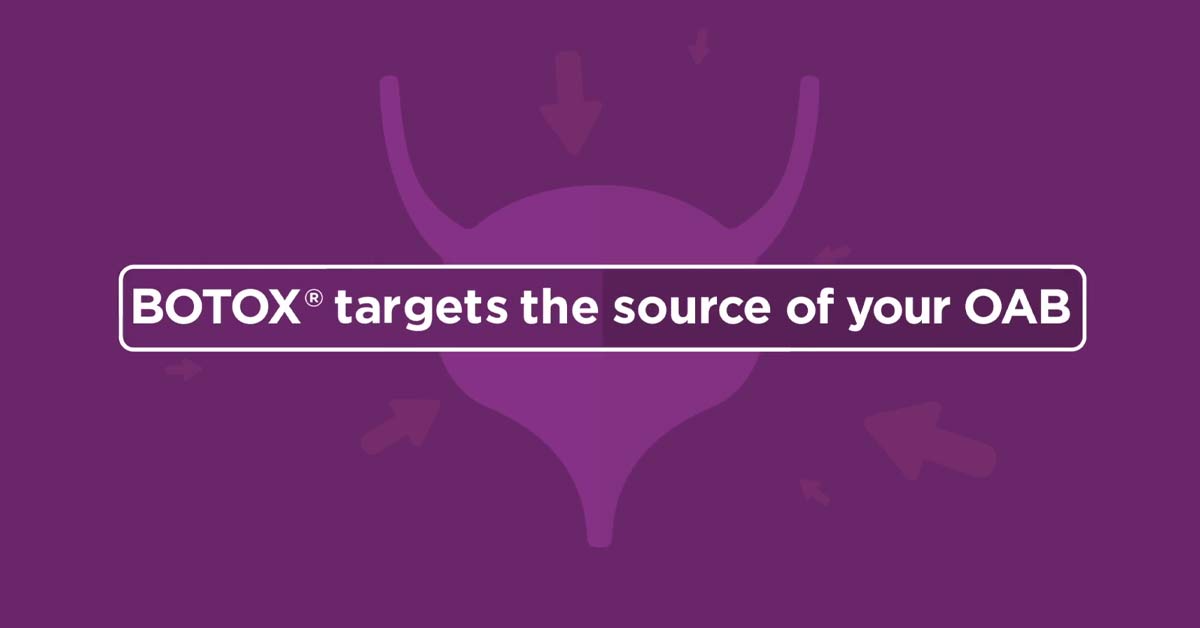Botox for Overactive Bladder
One therapy for OAB is Botox (onabotulinum toxinA). For many women, medications may not be effective against the symptoms of Overactive Bladder. If OAB medications haven’t worked for you, or you had unwanted side effects, Botox may be an option. Botox can help reduce OAB symptoms by relaxing bladder muscles for months at a time.
How does Botox for OAB work?
Just like relaxing facial muscles to smooth wrinkles, Botox decreases the muscular contractions of the bladder. Relaxing the bladder eliminates bladder spasms that trigger the urge to use the bathroom. Treating OAB with Botox lets you have enough time to get to the bathroom.

How effective is Botox for OAB?
In clinical trials, three months after treatment, people who treated their OAB with Botox had three fewer leakage episodes per day than those who did not treat their OAB. The majority of people in the trial had a 50% reduction in daily leakage episodes. Many had 75% reduction of daily leakage episodes, and about one in four experienced no leakage.
People in the trial also reported quality of life improvements. This includes a reduction in avoidance and limiting behavior, like planning schedules around access to bathrooms and not drinking fluids; frustration about how OAB impacts their everyday decisions; and social embarrassment or worry that symptoms are obvious to others.
How do I know if Botox is right for me?
If medications haven’t worked for you in the past and you’re ready to try something else, Botox bladder injections for OAB might be right for you.
OAB is a nerve disorder. Your nerves misfire, sending signals to your bladder that cause it to squeeze without warning. This causes bladder spasms, which lead to leakage, strong urges to use the bathroom, and using the bathroom too frequently. These symptoms may cause you to plan your days around having access to a bathroom, stay away from the activities you love because you fear leakage, and worry about OAB every day.
What results can I expect?
Most patients experience symptom relief as soon as a week after treatment. The full effect of the treatment may take up to two weeks. Treatment with Botox will last three to eight months. Treatment may be repeated when symptoms return.
What are the risks associated with Botox for OAB?
Some of the risks associated with Botox for OAB include:
- Urine retention
- Systemic weakness
- Urinary tract infection
- Blood in the urine
Botox for OAB is not recommended for men with a risk or history of enlarged prostate. Your doctor will discuss the potential risks of Botox prior to treatment.
Next Steps
If you’re ready to overcome the inconvenient symptoms of OAB, call today to schedule a Botox for OAB consultation.
Frequently Asked Questions
Is Botox for OAB covered by insurance?
Most major insurance plans cover the cost of Botox treatments.
How often can you have Botox in the bladder?
Botox for OAB is an ongoing treatment. Since it lasts about six months, you can have Botox for OAB about two times a year.










